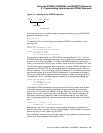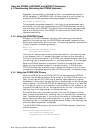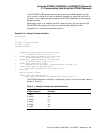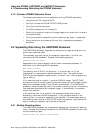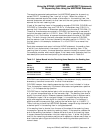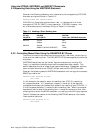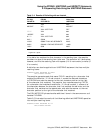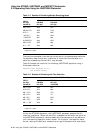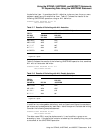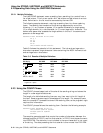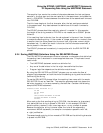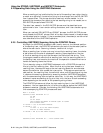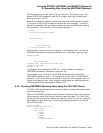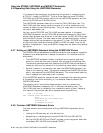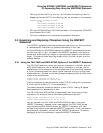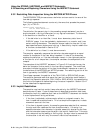
Using the STRING, UNSTRING, and INSPECT Statements
5.2 Separating Data Using the UNSTRING Statement
the delimiter item. It considers the ALL delimiter to be one, two, three, or more
adjacent repetitions of the delimiter item. Table 5–7 shows the results of the
following UNSTRING operation using an ALL delimiter:
UNSTRING FIELD1 DELIMITED BY ALL "*"
INTO FIELD2A FIELD2B.
Table 5–7 Results of Delimiting with ALL Asterisks
Values After UNSTRING Operation
FIELD1
PIC X(8)
VALUE IS:
FIELD2A
PIC XXX
FIELD2B
PIC XXX
JUSTIFIED
ABC*DEF* ABC DEF
ABC**DEF ABC DEF
A******F A## ##F
A*F***** A## ##F
A*CDEFG A## EFG
Legend: # = space
Table 5–8 shows the results of the following UNSTRING operation that combines
ALL with a 2-character delimiter:
UNSTRING FIELD1 DELIMITED BY ALL "**"
INTO FIELD2A FIELD2B.
Table 5–8 Results of Delimiting with ALL Double Asterisks
Values After UNSTRING Operation
FIELD1
PIC X(8)
VALUE IS: PIC XX
PIC XXX
JUSTIFIED
ABC**DEF ABC DEF
AB**DE** AB# #DE
A***D*** A## #*D
A******* A## ##*
Legend: # = space
In addition to unchangeable delimiters, such as literals and figurative constants,
delimiters can be designated by identifiers. Identifiers permit variable delimiting.
Consider the following sample statement:
UNSTRING FIELD1 DELIMITED BY DEL1
INTO FIELD2A FIELD2B.
The data name DEL1 must be alphanumeric; it can be either a group or an
elementary item. If the delimiter contains a subscript, the subscript may vary as
a side effect of the UNSTRING operation.
Using the STRING, UNSTRING, and INSPECT Statements 5–11



